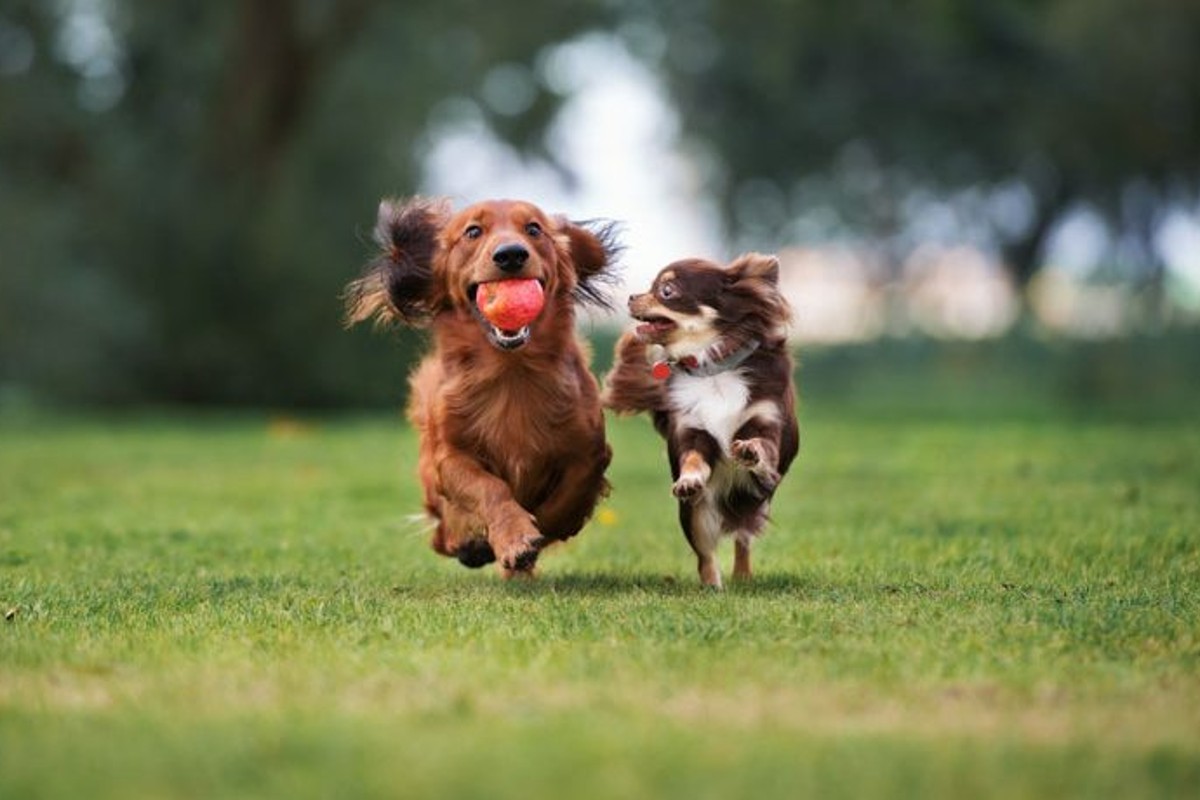
No matter the weather, one place you can always rely on for a crowd is the town dog park. The Trust for Public Lands announced in 2015 that dog parks lead the pack as the fastest-growing type of park in America’s cities, with a staggering 20% increase over five years. For many pet owners living in a city, the dog park is an essential resource for keeping a dog exercised, stimulated, and social. Despite the benefit of designated dog-friendly space in the concrete jungle, the dog park isn’t always the right fit for every pet.
What to know before you go to the dog park
If you have a new dog or you’ve both recently relocated to a new area and don’t know your local park, owners should check it out ahead of time without their dog to get a sense of the layout. Find out:
- How large is the park?
- Is it empty or are there structures or trees?
- Is it solidly fenced along the entire perimeter?
- Are there multiple entryways?
- Is there any screening or can dogs see each other approaching?
- Is there a water source on-site?
Some parks also have separate zones for larger and smaller dogs.
Once you’ve got a sense for how well-designed the park is, get a little closer and observe the owners and pets at play. While this is just a snapshot in time, scouting trips will give a sense of when the park is busiest and if any over-assertive regulars could pose a problem.
Before you go, assess your own dog’s personality and how it might react in a shared play space. Are they nervous? Do they respond aggressively when fearful? Do they enjoy socializing with unknown dogs? Are they obedient enough to come when called? If you have adopted a dog and are unaware of how they act in large, unleashed groups, suddenly throwing them into a new situation could prove traumatic. Try visiting early or late in the day when things are quieter to ease your pup into familiarity.
Is the dog park right for my pet?
One of the benefits of a dog park is the opportunity to play and socialize with other dogs. For an easygoing social butterfly, the park can be full of positive interactions and exercise. However, like humans dogs are individuals. If your dog gets overwhelmed by group situations, becomes easily anxious, or tends to act possessively around its owner, the dog park may cause more harm than good. After all, while dogs are social animals, parks can be an intense and artificial environment. Unlike doggy daycare, there is no impartial canine professional present to separate and discipline those in attendance. Over-aroused and boisterous behavior can provoke aggressive interactions, which have a ripple effect on the collective. Tensions can be exacerbated by the action–or inaction–of owners who are unable or unwilling to keep their dogs under control.
“Some dogs should not go to dog parks. They can be too shy, too bold, too defensive, or have tendencies to guard toys and balls,” advises the Association of Professional Dog Trainers (APDT). “Dog play styles can be radically different, and sometimes they are not compatible with each other. This can cause misunderstandings or even fights, and it can also exacerbate certain play styles.”





